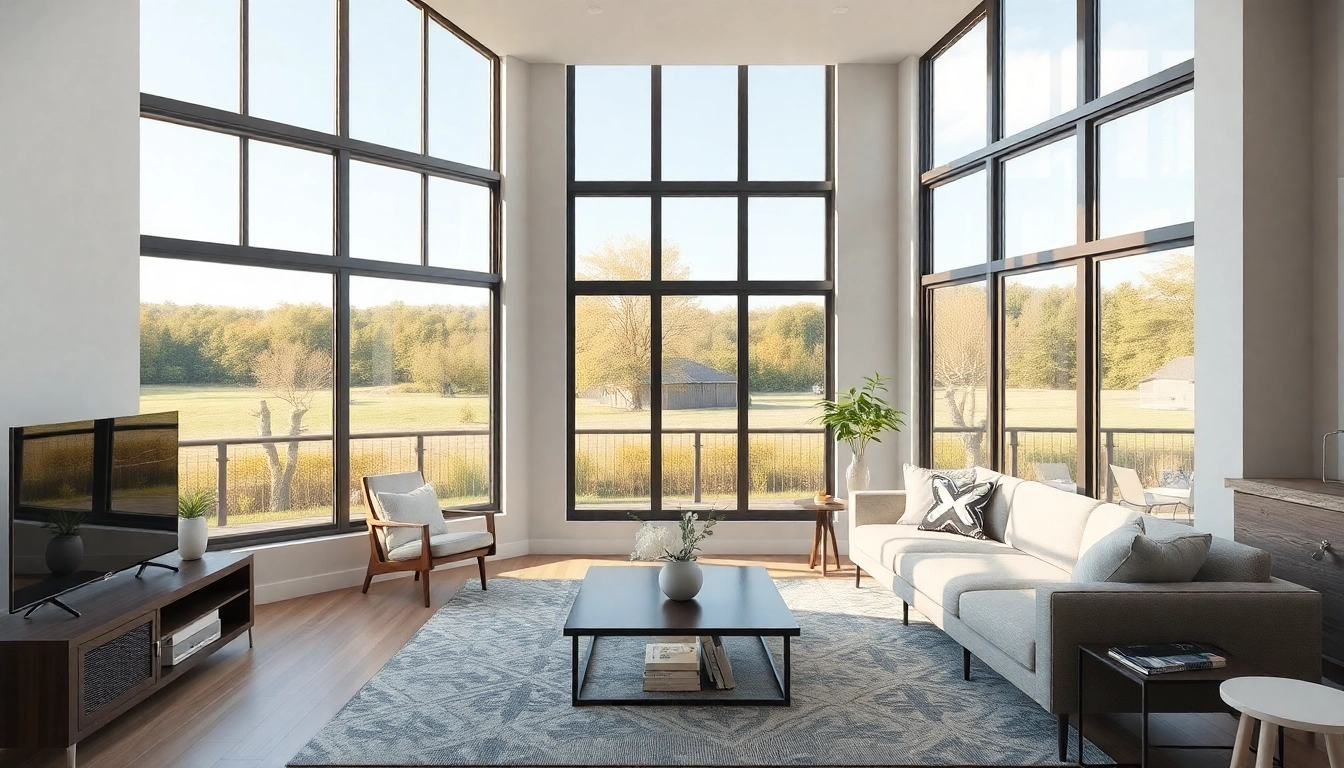Replacing windows is one of the most impactful upgrades a homeowner can undertake. It delivers immediate energy savings, better comfort, and increased home value. To explore the core concepts and practical steps, see our guide on Replacement Windows.
What Are Replacement Windows and Why They Matter
Definition and benefits of Replacement Windows
Replacement windows refer to a retrofit approach where the sash and glazing are removed and replaced while preserving the existing window opening and frame, when feasible. This can boost insulation, reduce drafts, and improve curb appeal without a full structural tear-out. Advantages include enhanced energy efficiency, better comfort across seasons, reduced maintenance, and often increased resale value. The right system also minimizes outdoor noise and can upgrade security with modern hardware.
Key components of high-performance Replacement Windows systems
Across high-performance installations, key components determine long-term performance:
– Glazing and coatings: double- or triple-pane glass with low-emissivity coatings for heat control.
– Gas fills: argon or krypton between panes for improved insulation.
– Spacers: warm-edge spacers reduce heat transfer at the glass perimeter.
– Frames: materials (vinyl, aluminum, fiberglass, wood) each with different thermal properties.
– Weatherstripping and hardware: seals, hinges, locks, and latches that maintain airtightness and ease of use.
– Installation sealing: proper flashing, caulking, and interior/exterior trim to prevent air leakage.
Together, these elements determine a window’s U-factor (heat transfer), SHGC (solar gain), and overall durability.
Dispelling common myths about Replacement Windows
Myth: replacement is only for new or large homes. Truth: retrofit approaches fit many homes, with scope tailored to openings and framing. Myth: it always costs a fortune. Truth: costs vary by material, glazing, and complexity, but long-term energy savings often justify the investment. Myth: DIY is always fine. Truth: improper installation can void warranties and reduce performance; professional installers bring accuracy, code compliance, and warranties.
Choosing the Right Replacement Windows for Your Home
Choosing the right Replacement Windows styles by architecture
Match window style to architectural cues and room function. Traditional homes benefit from double-hung or casement designs with tasteful grids, while contemporary structures often pair with clean, minimalist fixed or tilt-in designs. Bay or bow configurations can add depth and light to living spaces, and picture windows maximize unobstructed views. Consider how the style integrates with interior trim and exterior siding for a cohesive look.
Energy-efficient features in Replacement Windows to look for
Prioritize systems with layered energy features: multi-pane glazing, low-e coatings, inert gas fills, and accurate weathersealing. Assess the frame material’s thermal performance, the quality of the spacer system, and the installation’s air leakage rating. For extreme climates, triple-pane options and high-performance frames reduce heat transfer further, while UV protection preserves furnishings from sun damage.
Matching Replacement Windows to your home’s design
Finish and hardware matter as much as performance. Select finishes that complement siding and interior trim, and choose grid patterns that echo existing architecture. Ensure proportional sizing to maintain balance with doors, rooms, and exterior massing, so the upgrade feels natural rather than abrupt.
Replacement Windows Cost, Quotes, and Financing
Factors affecting Replacement Windows cost and ROI
Costs depend on window type, frame material, glazing level, number of openings, and installation complexity. ROI comes from energy savings, reduced maintenance, and improved resale value. While higher upfront costs may accompany premium materials or triple-pane glazing, long-term bills often decline as utility bills drop and comfort improves.
Getting accurate Replacement Windows quotes
To obtain meaningful quotes, request measured inventories, specify preferred glass options, and ensure contractors account for removal, disposal, flashing, and interior finishes. Ask for itemized line items, warranty details, and a defined timeline. Site visits should confirm opening conditions and any required structural work.
Financing options for Replacement Windows projects
Explore financing avenues such as home improvement loans, manufacturer promotions, or lender programs that offer favorable terms for energy upgrades. Compare interest rates, payoff timelines, and whether warranties remain valid after financing. A clear plan helps maximize value without straining budgets.
Installation Best Practices for Replacement Windows
Replacement Windows installation steps and timelines
Effective installation generally follows: (1) site inspection and measurements, (2) removal of sashes or old units, (3) opening preparation and flashing installation, (4) window placement and shimming for plumb and level, (5) sealing with interior and exterior caulk or foam, (6) trim and hardware finishing. Timelines range from a single day for uncomplicated retrofit jobs to several days for larger repertoires or challenging openings, with weather conditions influencing schedules.
DIY vs professional Replacement Windows installation
While DIY may seem tempting for smaller projects, professional installation ensures code compliance, proper flashing, and warranty protection. Experienced installers reduce risk of air leaks, water intrusion, and frame distortion. If you proceed DIY, secure thorough instructions, follow local building codes, and understand that improper installation can negate performance benefits.
Common pitfalls in Replacement Windows installation
Poor sealing and flashing, gaps around frames, misaligned sashes, or improper thermal breaks create drafts and moisture risks. Skipping weatherstripping or using incompatible fasteners can shorten service life. A meticulous installation protocol and a trusted installer are critical to achieving the promised energy efficiency and longevity.
Maintaining and Extending Performance of Replacement Windows
Maintenance for Replacement Windows: routine care
Regular cleaning of glass and frames, lubrication of moving hardware, and inspection of seals keep performance high. Wipe frames to prevent buildup that can affect operation, and address any hardware wear promptly to maintain ease of use and security.
Seasonal upkeep and seal checks for Replacement Windows
Seasonal checks should include inspecting caulk and weatherstripping, testing for drafts, and examining the exterior for peeling finishes or paint deterioration around the sash. Address condensation or fogging between panes promptly as it may indicate seal failure requiring attention.
Warranty considerations for Replacement Windows
Understand the scope and duration of manufacturer and installer warranties, what components are covered (glass, seals, hardware), and transferability. Keep maintenance records and install documentation to simplify claims and ensure ongoing protection for your investment.
